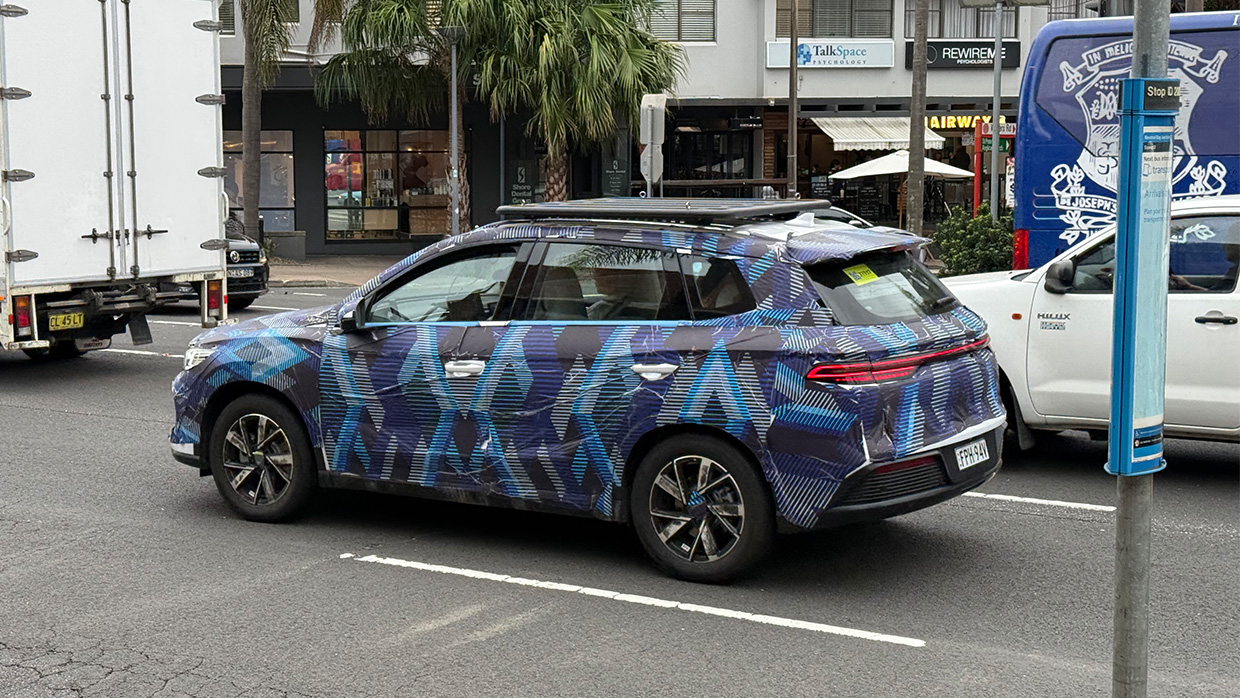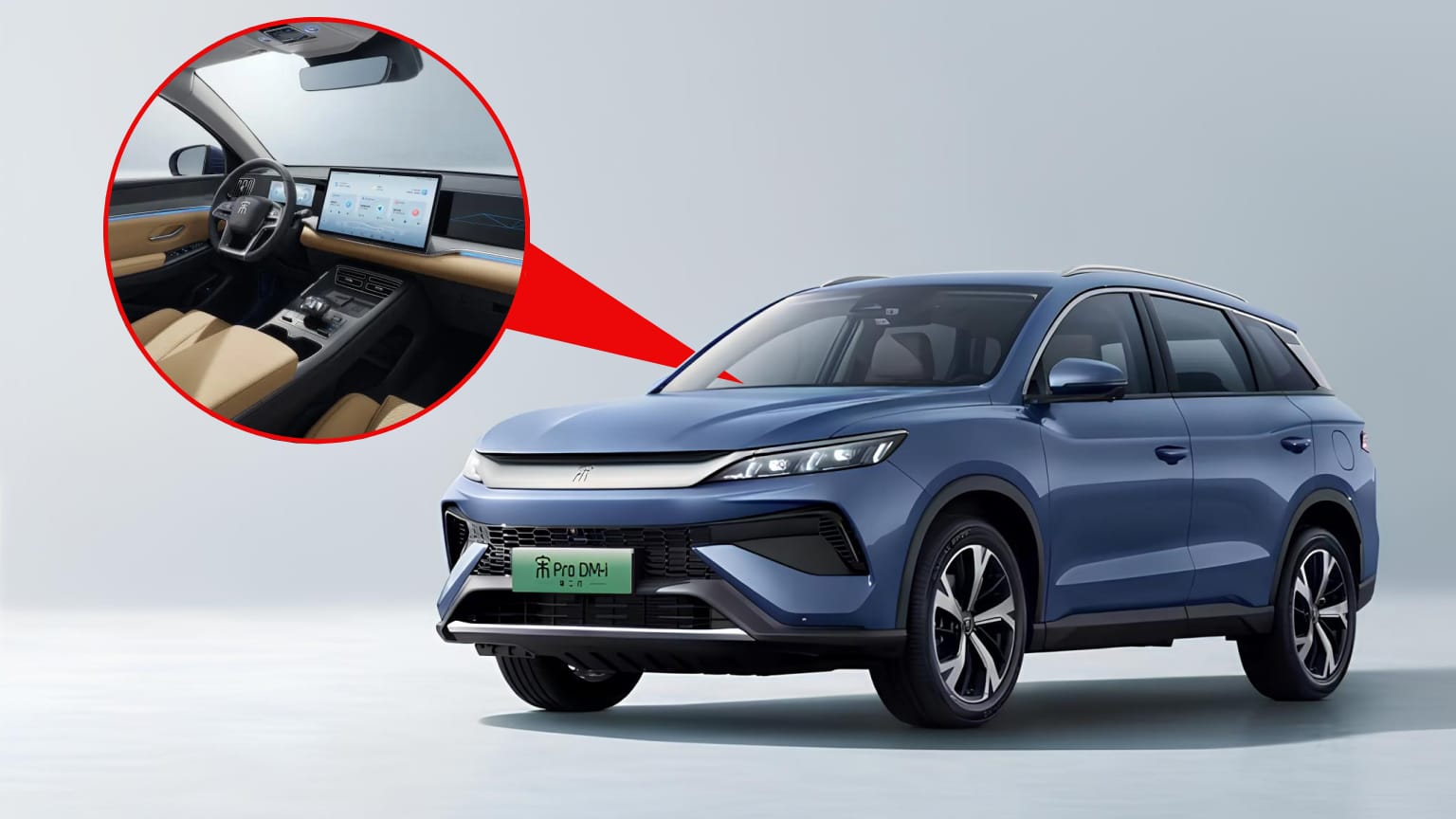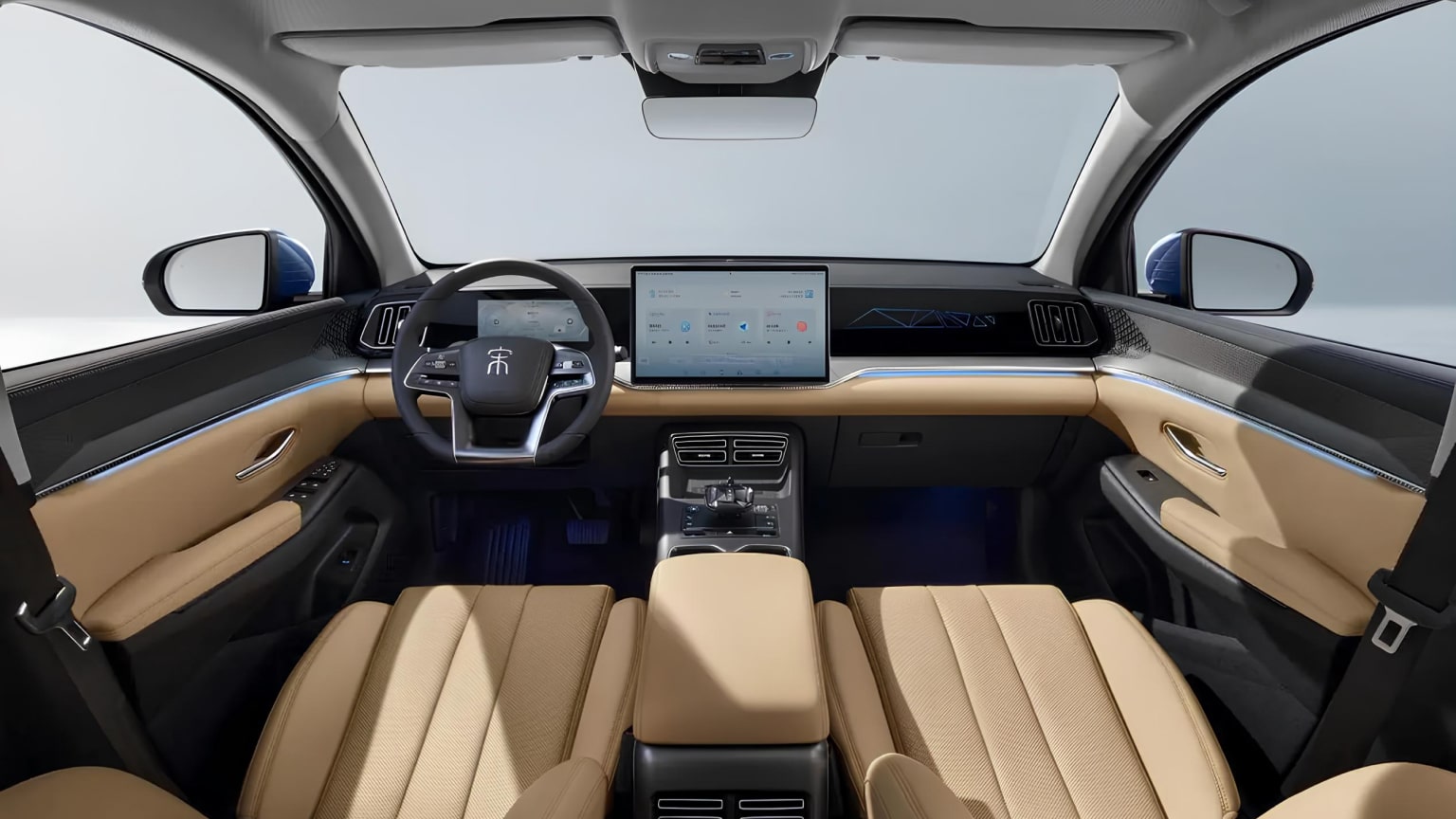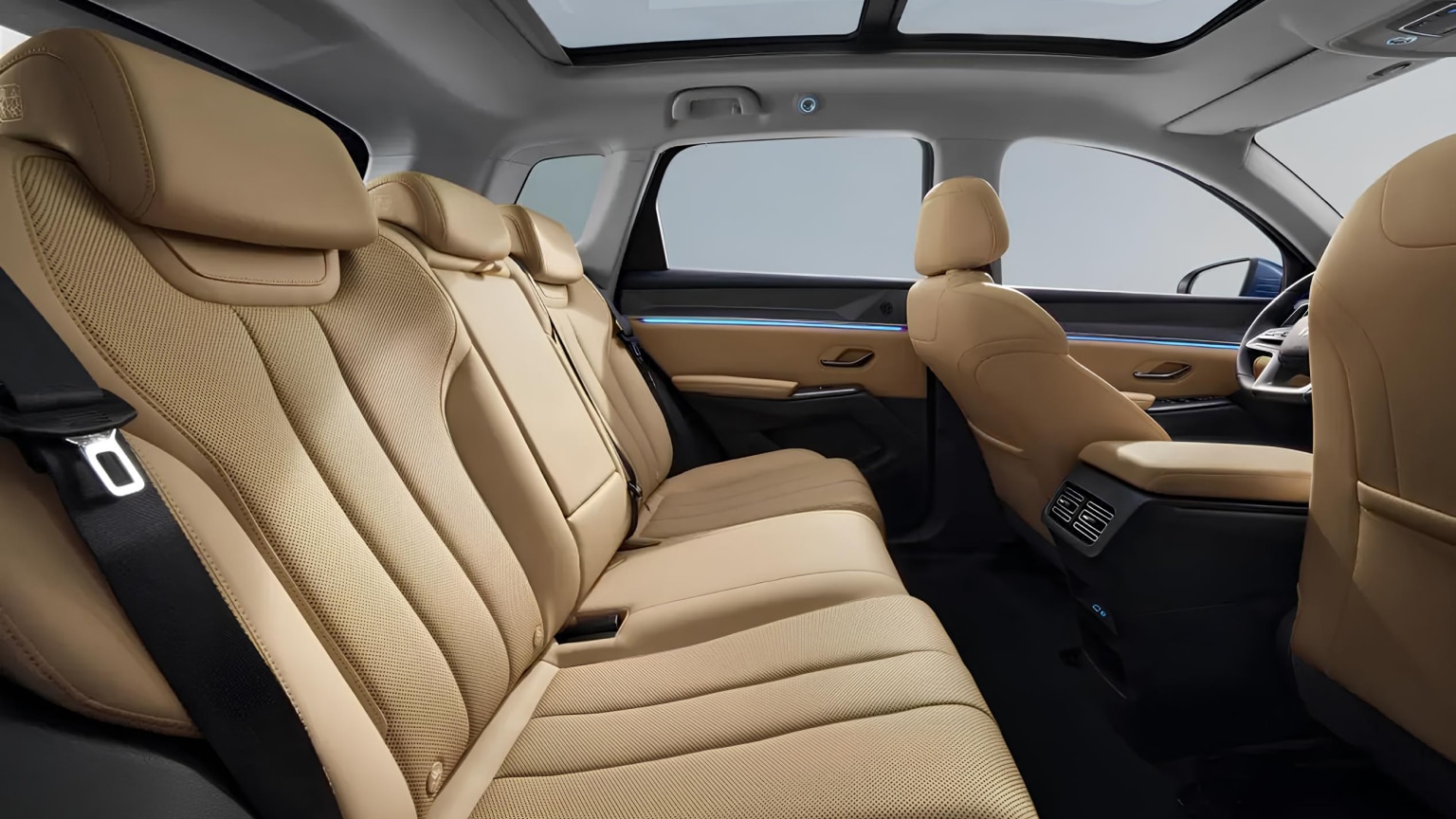-
Car Reviews
- All reviews
- Midsize SUVs
- Small cars
- Utes
- Small SUVs
- Large SUVs
- Large cars
- Sports SUVs
- Sports cars
- Vans
Latest reviews
- Car News
-
Car Comparisons
Latest comparisons
- Chasing Deals
Slightly smaller than a Sealion 6, the Song Pro would give Australian buyers an even cheaper PHEV midsize SUV from BYD
The BYD Song Pro DM-i midsize plug-in hybrid SUV is being tested on Australian roads under blue-tinged camouflage despite the latest update to the Toyota RAV4 and MG HS PHEV rival being fully revealed in China in February 2025.
Observed by Chasing Cars on public roads in Sydney’s lower north shore district, the lightly-covered Song Pro is white in colour beneath its wrap and is carrying a flat roof tray.
Like the small Atto 3 SUV—which was the first BYD model to launch in Australia—the Song Pro hails from the Chinese mega-manufacturer’s more traditionally-styled ‘Dynasty’ line of models.
By contrast, the Sealion 6 plug-in hybrid (PHEV) and Sealion 7 battery EV (BEV) crossovers, both sold in Australia, are sourced from BYD’s more adventurously-styled ‘Ocean’ series.
While the Sealion 6 and Song Pro are both PHEVs, the latter is smaller with its 4735mm length, 1860mm width and 1710mm height making the Song Pro a slightly shorter, narrower, taller option with a more upright stance in contrast to the Sealion 6’s gentler roofline.
BYD headquarters recently seized control of vehicle sales in Australia from former distributor EV Direct, which established the PRC-based carmaker locally and racked up more than 40,000 sales since its late 2022 brand launch.
The presence of the Song Pro in testing on Australian roads indicates that its maker is at least considering launching the SUV locally, potentially as an even cheaper foil to the Sealion 6, which is already priced very sharply from $42,990 before on-road costs.
First launched in China in 2019, the Song Pro is an older product than the
Sealion 6. It has received two facelifts, with the most recent occurring in September 2024 before newer DM-i PHEV powertrains were added in early 2025.
Initially, non-hybrid, petrol only versions of the Song Pro were sold but they have been discontinued in China in favour of a PHEV-only range.
Customers can choose between two LFP battery sizes are available in China: 12.9kWh or 18.3kWh, in Ultra or Excellence trim. All Song Plus versions combine a 74kW/126Nm 1.5-litre non-turbo petrol four with a 120kW/210Nm front electric motor.
Estimated WLTP range for the 12kWh battery is 60km on electric power and 1000km total range, with the 18kWh pack extending those figures to 90km and 1050km respectively thanks to a 52-litre fuel tank. Both batteries are capable of a 30-80% DC fast-charge in around 36 minutes.
The New South Wales-plated ‘BYD Song Plus evaluation vehicle’ was registered on 2 May 2025 with delivery kilometres only, and was certified to have a tare mass of 1740 kg—which lines up with its Chinese-spec kerb weight of 1765kg.
Standard specification in China includes a 12-inch touchscreen (15-inch in the Excellence), 8.8-inch digital instrument cluster, artificial leather seating, a power driver’s seat and independent rear suspension.
Staggeringly, as of June 2025, the Song Plus PHEV costs just $23,000 AUD in 12kWh Ultra trim, or $27,000 AUD in full-fat 18kWh Excellence guise—rock-bottom pricing spurred on by a price war in the Chinese ‘new energy’ (PHEV and BEV) market which BYD has led.
In Australia, if the Song Pro was positioned beneath the Sealion 6, it could sneak into the high-$30,000 range for an entry-level version.
An increasingly broad portfolio of BEV and PHEV models in Australia, which includes the Shark 6 hybrid ute, will give BYD an advantage under this country’s NVES emissions laws.
Under NVES, credits are awarded to carmakers that beat CO2 targets—and penalties handed out to those in breach—likely most of BYD’s rivals. Brands that beat NVES targets can sell excess credits to manufacturers that would otherwise face a fine, creating another source of revenue.
In that context, it could make sense for BYD to add another PHEV crossover—a segment of the market that will heat up considerably in the first half 2026 when the Toyota RAV4 PHEV will land in Australia in new-generation form.
Other plug-ins competing for attention in the space include the Mitsubishi Outlander PHEV, Lexus NX450h+, and Cupra Formentor VZe.
NVES will warp the economics of new car, SUV and ute sales in Australia to a considerable degree, and it will increasingly make sense for carmakers to favour BEV and PHEV models—with possible discounting one tactic to induce additional sales and avoid potential fines.
Sales of PHEVs were incentivised in Australia via a full exemption from fringe benefits tax (FBT) for PHEVs purchased through a novated lease structure using pre-tax income—but the FBT waiver was closed to PHEV sales on 1 April 2025, becoming a BEV-only benefit from that date.
Latest news
About Chasing cars
Chasing Cars reviews are 100% independent.
Because we are powered by Budget Direct Insurance, we don’t receive advertising or sales revenue from car manufacturers.
We’re truly independent – giving you Australia’s best car reviews.



